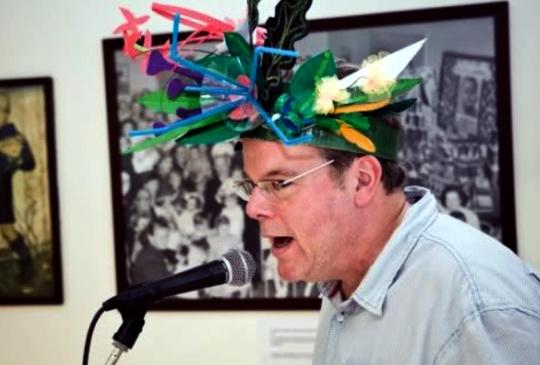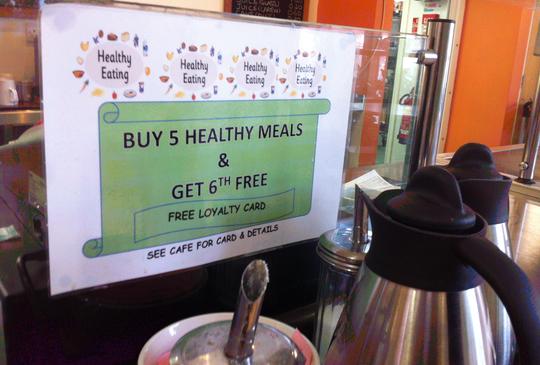
The Cornerstone of community
Langworthy Cornerstone is a large, modern, purpose built community centre in the Seedley & Langworthy area of Salford.
The centre hosts and provides a wide range of services and activities for the local community, with a main focus on health and wellbeing.
The centre was built through an unusual partnership between the NHS and Salford City Council in 2001 and opened by Hazel Blears MP, drawing on the regeneration funding that was available at the time for the redevelopment of Seedley & Langworthy.
John became Chief Officer of Langworthy Cornerstone Association (LCA), a newly formed Charity & Company Limited by Guarantee, in 2006, at the point where the local community took on managing the centre themselves (& the regeneration money finished!).
John was the first ever employee of LCA; having previously managed a community centre in Finsbury Park, London, on top of extensive experience in the voluntary & community sector in Manchester & the North West dating back to the 1980's. John has been able to bring all this experience to bear in contributing to helping the Cornerstone develop into the success it is today.
The journey hasn’t been easy. Building the building was the straightforward part – a new purpose-built and accessible development. Making it work for the community has been a harder task. It took time to work out how to manage the partnership between the NHS and Council, decide on the appropriate use of the building for their activities and respond to different decision-timelines.
From these roots, however, the wide-range of services on offer is now testament to the crucial role that Langworthy Cornerstone plays. Nowadays, the centre is multi-purpose and offers a wide range of services and activities including active seniors and dance classes, stage school, ESOL & language courses, a job club & computer drop in, a café & cookery courses promoting healthy food, advice services, one to one support, and counselling.

A culture of partnership working allows specific projects to be run, such as the Way to Wellbeing project with the Big Life Company and ‘Cornerstone Champions’, a volunteering project funded by Lloyds TSB. There is access to a GP surgery and a Sure Start Centre for childcare and family support within the building.
75% of people come from within 10 minutes’ walk from the Centre; they come not only for the activities, but also for the emotional and relational benefits. Despite having a well-developed approach to evaluating their impact, this kind of benefit is far harder to track: “The most important thing about us is that we’re engaging and friendly with people. If you are looking for spin-offs – how feeling good, feeling happy translates into other areas of people’s lives – that is more difficult to measure."
If you are looking for spin-offs – how feeling good, feeling happy translates into other areas of people’s lives – that is more difficult to measure.
John thinks a number of factors have helped him keep the Langworthy Cornerstone afloat. The building is a key asset. John and his team have worked hard to make sure that the organisation is well managed and professional, which has helped to maintain quality & funding support, such as its Health & Wellbeing contract with the NHS.
Most importantly, Langworthy Cornerstone keeps a wide portfolio of activities under its clear overall aim of improving people's health & wellbeing; by ‘ducking and diving, striking deals, just seeing an opportunity and doing it’. ‘Don’t put all your eggs in one basket’, John advises, ‘and avoid chasing the Council for money. The council is half the size it was or will be by the end of the latest round of cuts….all the things the local authority used to take a lead on, just won’t happen’.
One great example of Langworthy Cornerstone’s work is the men’s health pilot. Men are less likely to use health services early and many are suffering social isolation, along with increasing health issues & early mortality.
The pilot is a non-clinical, light-hearted approach, based on the Haynes car manuals (HGV Man, Haynes Man Manual etc), & will provide a lengthy 'menu' of activities appealing to a broad range of ages & ability. This is alongside one-to-one health checks and well-being coaches: ‘That’s aimed at people who’ve got who’ve got “multiple indicators”, which they have tried and failed to do something about in the past. They’ve gone and joined the gym, they’ve gone on the wagon, and then a year later, they’re further back than when they started. That's a lot of people’s experience of trying to do something about their health, so it's about small steps that build up over time & sustaining it.”
Another example that John is clearly proud of is the healthy eating café. When the building was first set up, its café was run by the NHS but ‘it just did cheese and chips. It didn’t fulfil any of the criteria for healthy food’.
We made a business case on the basis to the NHS of [the cafe] losing money…but the gains in terms of health more than balance that out…it’s quite successful in promoting healthy home-cooked food, but it’s been a rocky road getting there.
Given the high levels of ill health and mortality in parts of Salford, the café runs as a healthy eating pilot. It runs at a loss financially, subsidised by other parts of the centre’s activities, but has wide health and social benefits. “We made a business case on the basis to the NHS of it losing money…but the gains in terms of health more than balance that out…it’s quite successful in promoting healthy home-cooked food, but it’s been a rocky road getting there.”
An important part of the café is a cookery school with Rob the Chef where people can learn about food preparation, cooking skills, take a Food Hygiene Level 2 and even a bistro course (running your own restaurant). This has had great benefits, “it’s amazing some of the stories about how it’s changed people’s lives and allowed them to move from being stuck in the house, isolated, depressed, into employment and stuff like that…..people want to carry on doing it forever, but it’s so expensive, we can’t afford it.”
It’s amazing some of the stories about how it’s changed people’s lives and allowed them to move from being stuck in the house, isolated, depressed, into employment and stuff like that.
The food agenda has become an increasing priority over the past few years. Langworthy Cornerstone has joined up with Salford Food Bank and gives food vouchers, has emergency food and a small bus fund to help people get to the food bank. “We never used to get anybody asking for a lot, have got no money and nothing to eat. Now it’s two or three a week. They’ve just opened a branch down on the industrial estate that was down the road. It’s bad really.” The real issue is not about handing out food, but access to services, restarting benefits, dealing with short-term crises through creating long-term resilience.
Centres like Langworthy Cornerstone are critical in this respect. But a central issue facing the hub is how to develop its own management and governance structures to stay embedded in the community.
The Cornerstone needs experts on the management committee with real expertise in areas like finance, law and public health. But they also need to represent their community, moving to an wider general membership and elected board, along with diversifying the decision-making of the organisation. This will enable the Cornerstone to remain the focal point for the community.
John wants the centre to diversify further, with plans for a broader range of services, such as the Langworthy Business School, helping people with ideas move up the ladder. In some ways, he notes, Langworthy is doing quite well: the shop units are filled; Seedley and Langworthy in Bloom brings colour and vibrancy to the area; the park has been done up; there are new schools and new housing going up. “Media City is down the road. Trickle down? My ass! But, anyway, it’s there, and over time I think it will provide some opportunities.” The key thing is to ask local people where they want to see this area in 5 to 10 years.
The story of Langworthy Cornerstone is both familiar and different. Its large purpose-built building is a central asset and there are clear alignments with the health and well-being agenda. Whilst not articulated as delivering on policy objectives, Langworthy Cornerstone is doing precisely that; quietly tackling food and fuel poverty, isolation and depression, health and well-being, personal and relational resilience.
To that extent, the challenge is to ensure that the changing context of austerity and public sector reform doesn’t stop it from delivering benefits for the local communities it serves.
Further Information
Visit the Langworthy Cornerstone Facebook Page for regular updates or visit their website.
Acknowledgements
This profile was produced as part of the Greater Manchester Local Interaction Platform project on 'Realising the Potential of Community Hubs'
Main image courtesy of Flickr user mwmbwls published here under a Creative Commons Licence.
Contributor Profile
I am a Professorial Fellow in the Faculty of Social Sciences at the University of Sheffield. I describe myself as an interdisciplinary urbanist, interested in processes of transformation and change, particularly around governance and policy processes; the roles of universities in their urban environments; and the research-practice relationship.



